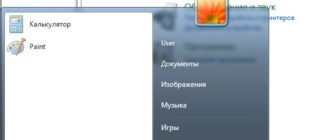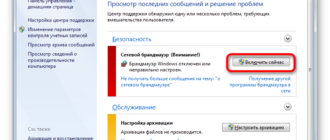Код ошибки 43 мак ос
It’s a regular day and all you were trying to do was move a file between folders or to the trash, when Error 43 on your Mac stopped you in your tracks. You don’t know what causes it and you can’t move forward.
You can either ignore the error and give up on your file or try to fix the issue. Let’s see if we can find a way to fix Error code 43.
What is Error 43?
Error code 43 stands for an error that happens when your Mac can’t locate the file in question and thus can’t complete the requested action, e. g. moving the file to Trash, copying it, or moving it to a different folder.

Reportedly, the error is quite uncommon with newer Mac OS versions, but even once can be enough to stall your workflow. Here are some of the possible reasons for the error:
If the file you are trying to move or delete is being used at the moment, your Mac might not be able to perform the action and throw up Error 43.
Files that haven’t fully downloaded can cause the error and prevent you from moving or deleting them.
If your file is locked, you might not be able to perform actions with it. A file might be locked to prevent it from unwanted changes or accidental deletions. To check if your file is locked, click on the file, select Get info and see if there’s a checkmark next to Locked in the pop-up window.
Finally, your Mac might simply not be able to locate the file on your disk.
Fix error 43 on Mac
There are a few ways you can try and fix error code 43 on Mac.
Sometimes error 43 comes down to just your Finder not responding. To fix this, force quit Finder.
Click on the Apple menu in the top left corner of your screen and select Force Quit:
In the pop-up Force Quit window, select Finder and click Relaunch:
If you suspect a different app is using your file, you can force quit it here as well.
Next, run Disk Utility to diagnose your disk for any errors and repair the volume, if necessary.
To find this built-in Mac app, open Finder, navigate to Applications > Utilities, and spot Disk Utility there.
Open the app and click on First Aid button at the top right of your app.
And click Run on the prompt to check your volume for errors:
Since this process can take a while, make sure you have the time and can take a break from your tasks while Disk Utility does the diagnostics and repairs. The warning that appears after you hit Run projects the process can take from several minutes to hours.
Another way to tackle error code 43 when your Mac can’t delete a file is to reset NVRAM.
NVRAM is a non-volatile random access memory that is responsible for retaining data even when your device is powered off. To reset it, shut down your Mac by going to the Apple menu and clicking Shut Down.
Next, press the Power button to turn your device back on. Press and hold keys Option + Command + P + R for around 20 seconds as your Mac boots up.
Note: If your Mac supports a special firmware password and you have it set, you will need to disable the firmware password first and then follow the above steps to reset NVRAM.
If the reason the file you are trying to move or delete is that it’s locked, you can use Terminal to unlock it. Open Finder > Applications > Utilities and locate Terminal. Open the app and type in the command:
This Terminal command should unlock locked files and allow you to delete or move them.
You can also try to delete locked files in safe mode.
To enter safe mode, shut down your laptop and wait 10 seconds. Press the power button to start your Mac back on and press and hold the Shift key right away. Hold it until you see the login window. There, you should be able to see Safe Boot in the Menu bar at the top right of the login screen.
If you are using an Apple silicon Mac, enter the safe mode by shutting down your Mac, waiting 10 seconds, then pressing and holding the power button until you see startup options. Select your startup disk, press and hold the Shift key, and click Continue in Safe Mode. Release the Shift key.
Once you are in safe mode, proceed to delete the files as you usually would by dragging them to Trash or two-finger tapping and selecting Move to Trash in the drop-down menu. Make sure to empty the trash before you exit the safe mode to ensure your files get deleted permanently.
Simply reload your Mac to exit the safe mode.
Another way to try and delete stubborn files on Mac is using Delete Immediately. Access the feature by selecting the files you want to delete and clicking File. Press Option once the menu opens to reveal the Delete Immediately menu option:
This tool deletes your files, bypassing Trash. You can immediately delete files by using the key combination Option + Command + Delete.
Recover data after fixing error 43
If in the process of fixing Error 43 you’ve accidentally removed some files, discovered that some of data is corrupted, or there was a disk utility error, don’t worry – you can try Disk Drill to bring back the data.
Disk Drill will scan your disk and locate the missing files. The app can restore your files that have gone missing, photos you hold dear, and other important information on your Mac. The process is quick and easy, and can help you get back information lost on your Mac.
Final thoughts
If you need to move, copy, or delete files on your Mac and Error 43 keeps popping up, it can be very frustrating to deal with. Sometimes your file is corrupted, while in other cases it’s just locked, hasn’t been downloaded fully, or has system-prohibited special characters in its name. Use the above guide to try and find the solution for your specific need.
If you discover that some of your data is corrupted or accidentally delete files that you need, try Disk Drill to recover your missing files.
To keep your Mac clean and healthy, use CleanMyMac X – this staple app for Mac cleanup, malware and unwanted app removal, and maintenance. CleanMyMac X can perform such handy tasks as identifying old large files you might have forgotten all about and don’t need anymore, cleaning up cache and app junk.
Both Disk Drill and CleanMyMac X are available with a Setapp subscription, just like more than 200 other apps to optimize your work, help with creative tasks, productivity, and more. Browse the list of apps and get Setapp here!
https://www. enigmasoftware. com/how-to-fix-mac-error-code-43-copying-files/
https://setapp. com/how-to/fix-error-43-on-mac








